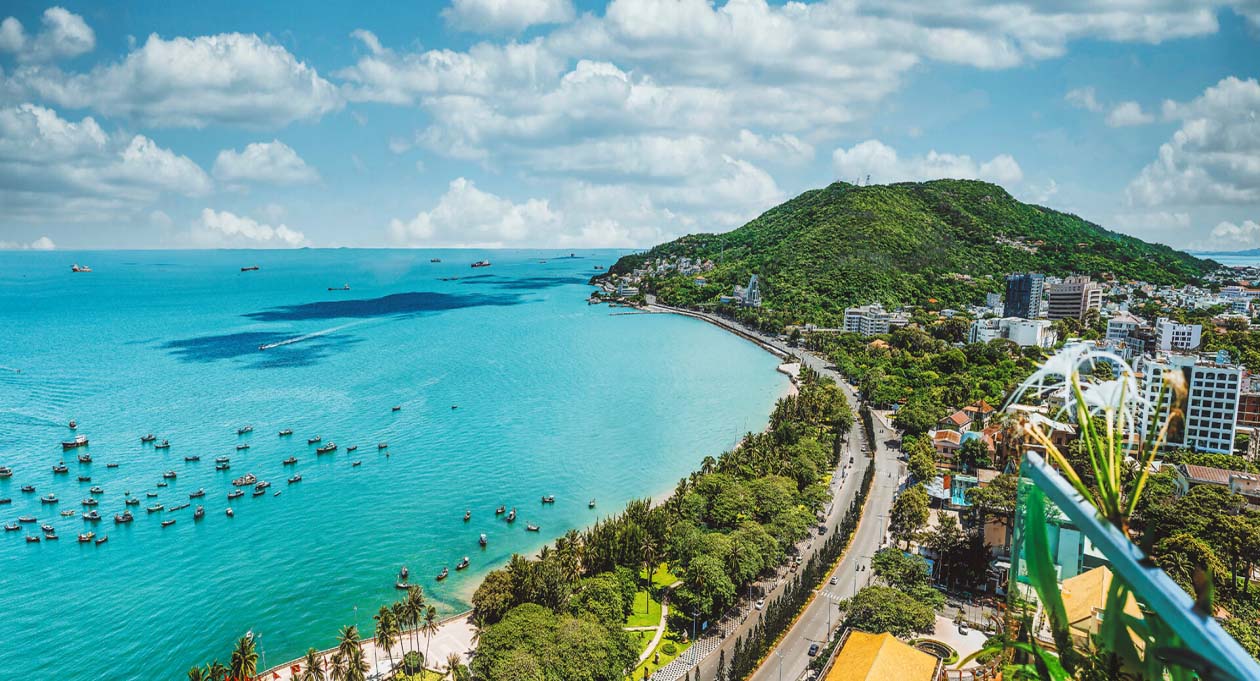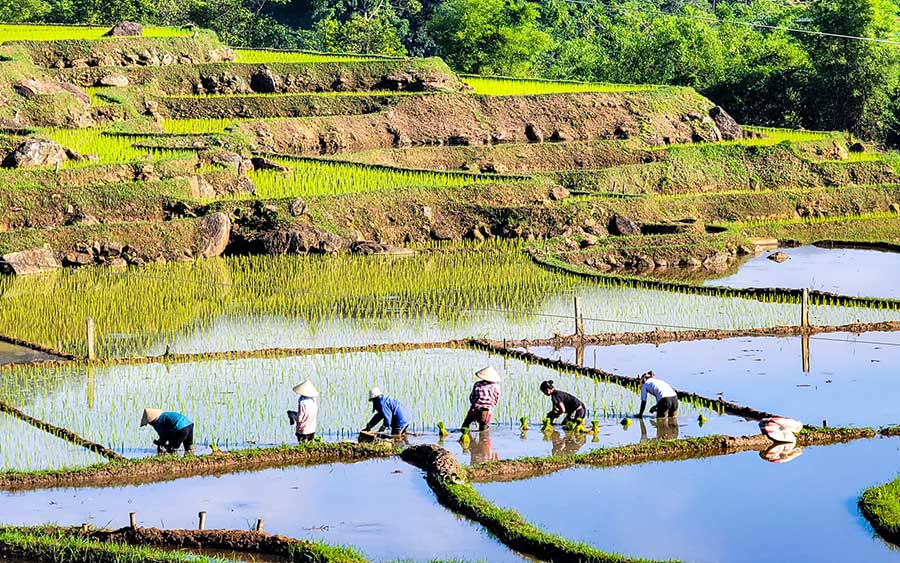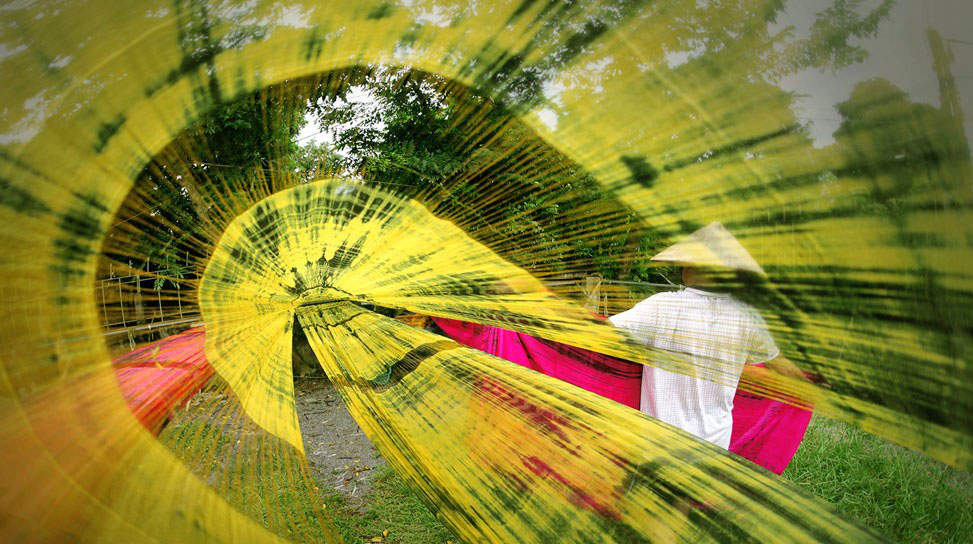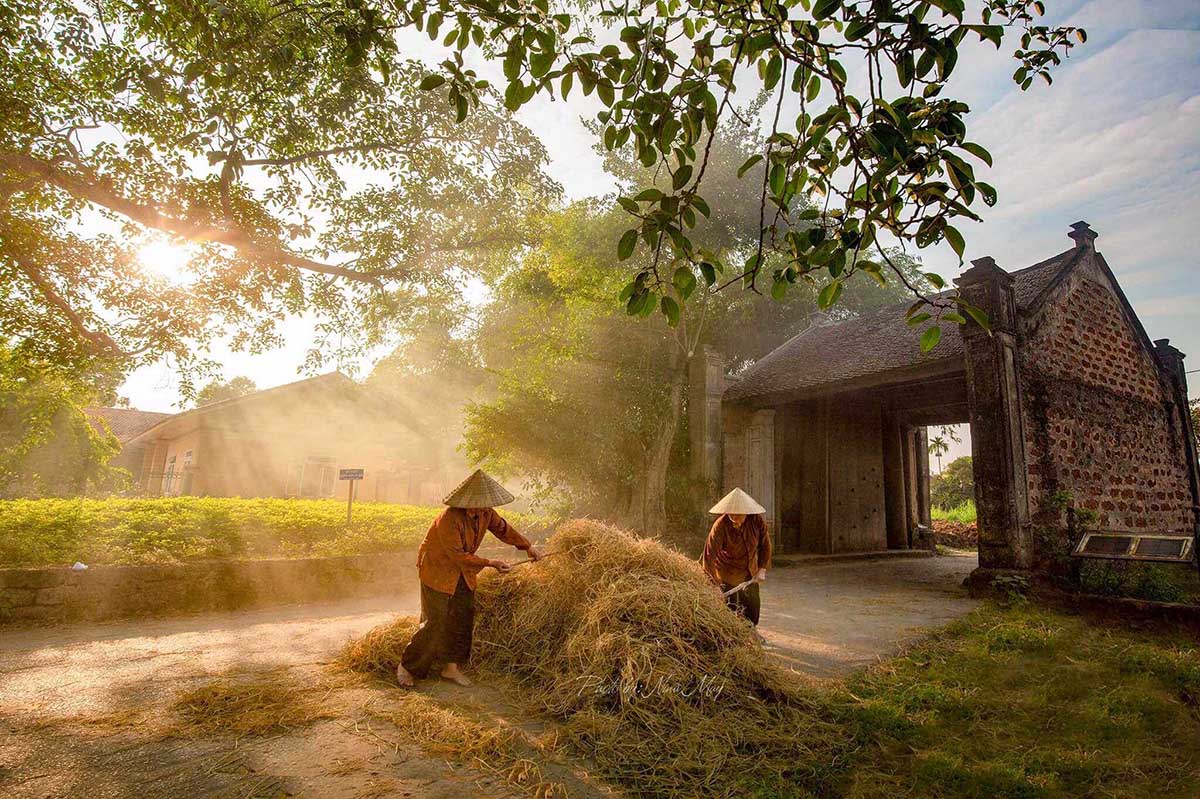History of Thien Mu Pagoda
-
Location: Huong Long village, on the north bank of Perfume River - 5km from Hue city center.
-
Opening hours: 08:00–18:00
- Fee: Free
In 1601, the first Lord of the Nguyen Kingdom - Nguyen Hoang came to Thuan Hoa province and heard a strange story from villagers. Local people spread the word to each other from generation to generation that a very old woman appeared every night on the hill right at the position where the temple stands today. She said that one day, a true monarch will erect a pagoda here for the country's tranquility and prosperity. By the time he knew that story, he immediately built a Buddhist temple and named it Thien Mu.
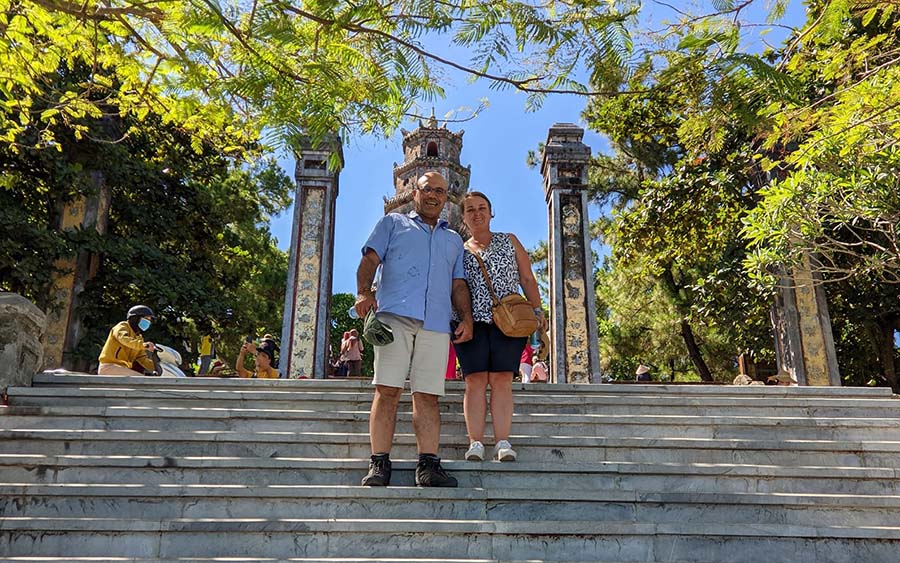
The name of the temple comes from a mysterious story
In 1904, a devastating storm inflicted severe damage upon the pagoda, leading to the ruin of numerous structures. Despite the extensive reconstructions and restoration efforts that followed, Thien Mu Pagoda still preserves its valuable architectural elements. Thanks to an interesting story and the breathtaking beauty of it, the pagoda became one of the most popular sites that beckon both domestic and international tourists.
The mysterious love curse of Thien Mu
Besides the story about the temple's history, local people also told that Thien Mu Pagoda cursed. A long time ago, a destitute orphan man found love with the daughter of an affluent family. Tragically, the girl's parents compelled them to part ways. In despair, they chose to end their lives in the courtyard of the Huong River (in front of Linh Mu Pagoda) as a testament to their profound love.
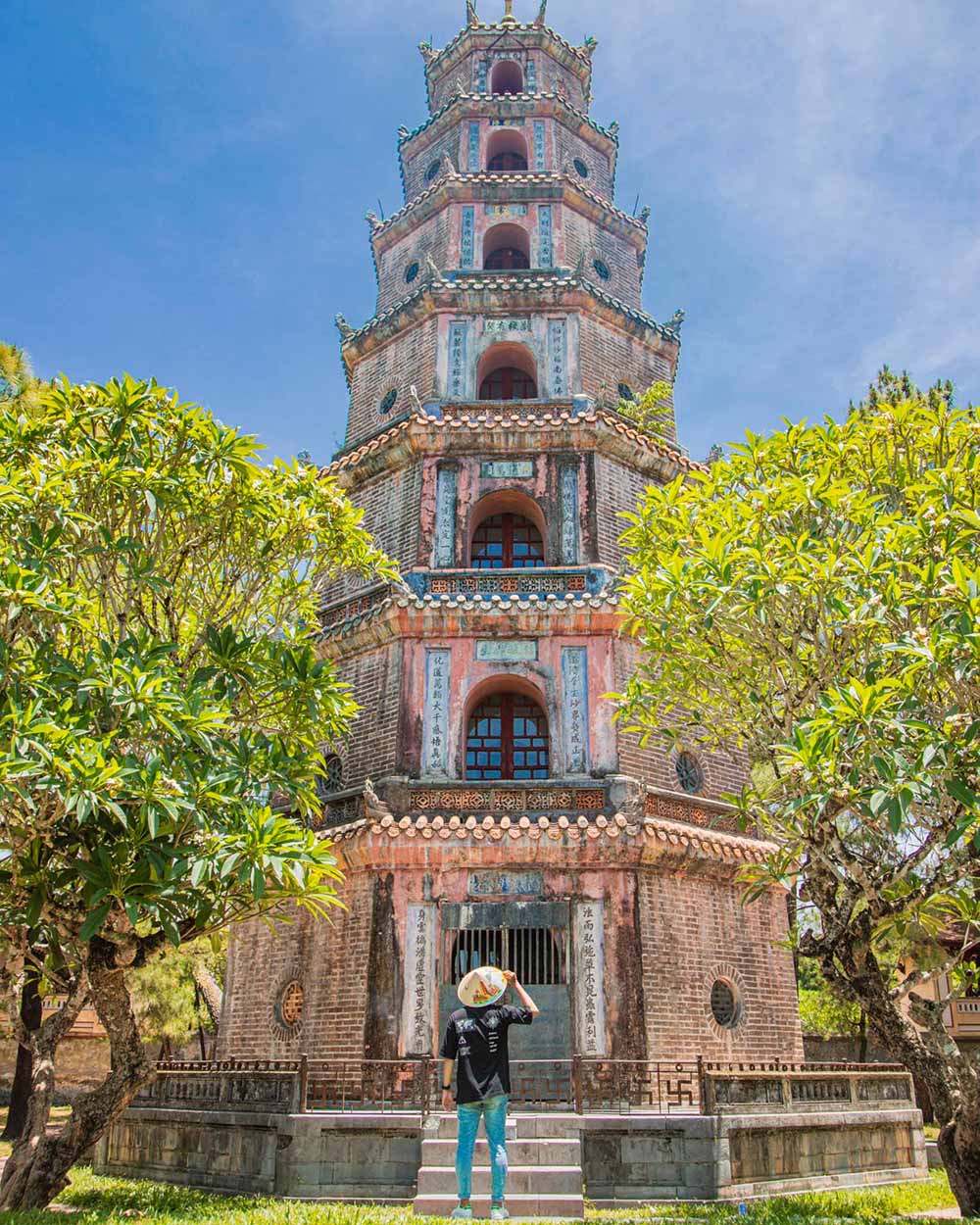
The story of the curse adds to the mystery of the temple
Ironically, the boy perished, while the villagers managed to rescue the girl. Over time, she moved on, forgot the boy, married a wealthy Mandarin, and embraced a life of affluence. The tormented spirit of the boy, aware of this heart-wrenching tale, subsequently placed a curse that every couple visiting Linh Mu Pagoda would face separation. To this day, the poignant love story remains etched in the memories of the locals, an enduring tale of sorrow and heartbreak.
How to get to Thien Mu Pagoda?
There are several ways to reach Thien Mu temple:
-
Cyclo: Cyclo will give you opportunities to admire the peaceful scenery of Hue City with the cost varying from 1.65 USD to 4.12 USD per trip.
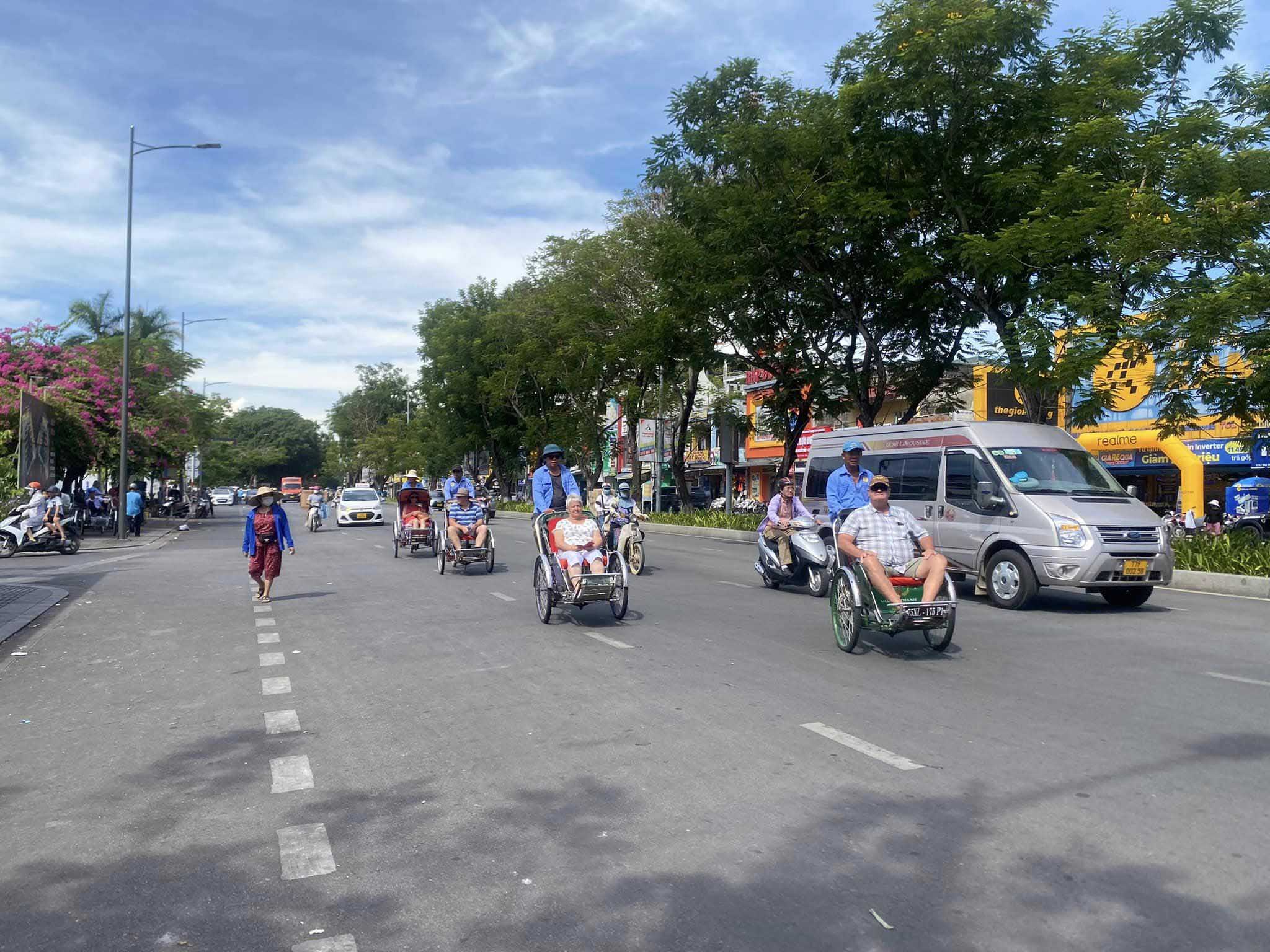
Cyclo in Hue City
-
Motorbike: If you want to travel freely, just rent a motorbike with the cost of about 4.12 USD - 6.19 USD per day. From the Imperial City of Hue, you take Kim Long Street. From here, go about 2 km then you can reach Thien Mu Pagoda.

Riding a motorbike in Vietnam is an experience worth trying
-
Taxi: It is the most convenient and fastest transport to reach Thien Mu Pagoda because you can catch one right at your position and head to the temple. The average cost for each kilometer of taxi in Hue is about 0.49 USD.
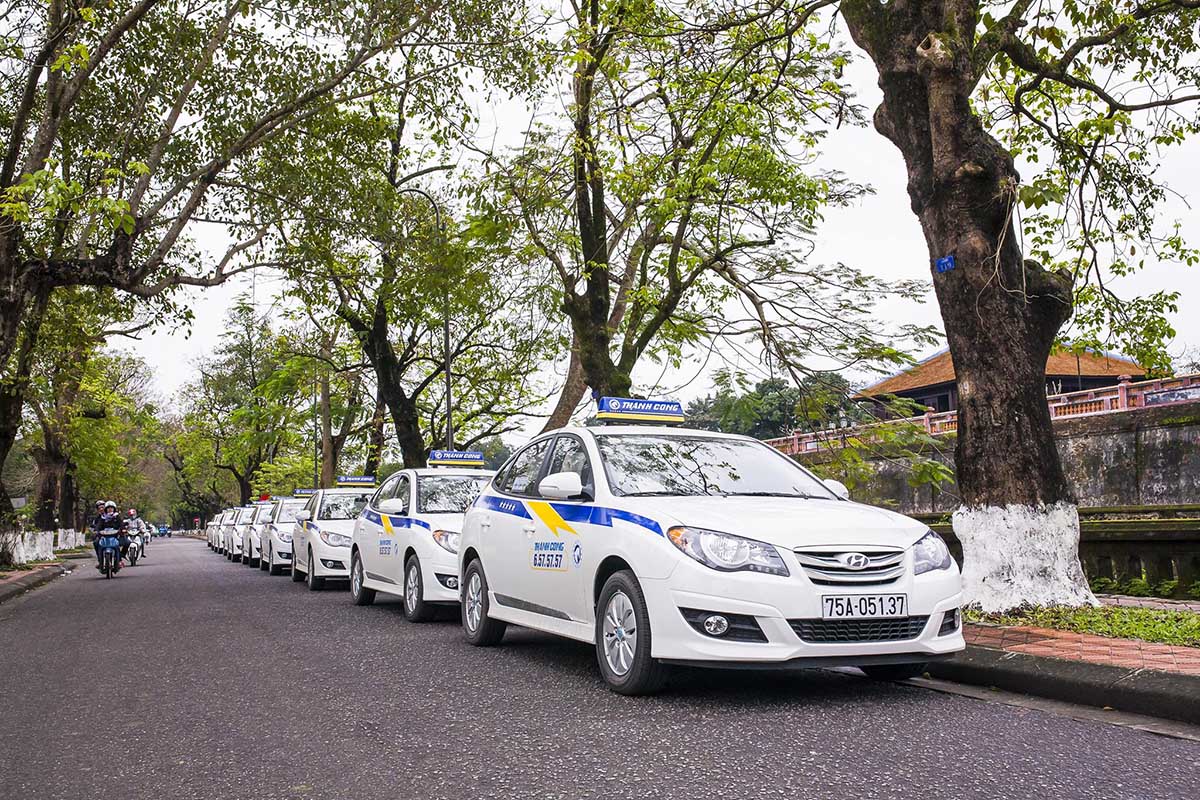
Taxis are also a great transportation option
-
Boat: This is a way to enjoy the beautiful scenery of the Perfume River and the ancient city of Hue by dragon boat. If you travel by a group of 10 - 15 people, the boat will be the best option for you. The cost for a round-trip boat is about 20.62 USD. You can rent a boat at Toa Kham Wharf at 49 Le Loi Street, Phu Hoi Ward.
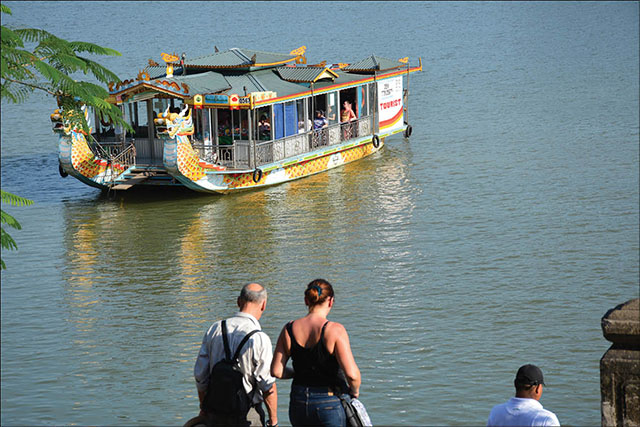
Traveling by boat is very suitable for tourists traveling in groups
What is the ideal time to visit Thien Mu Pagoda?
February to April and September to November are the best times to visit Thien Mu Pagoda. These months are also the peak tourist season in Hue. In this timeframe, the climate is typically enjoyable, characterized by moderate temperatures and low humidity levels.
What to see at the Thien Mu Pagoda?
Phuoc Duyen Tower
This tower can be seen from the Perfume River, standing from a distance, this tower looks like a huge dragon. Phuoc Duyen Tower was a birthday present of Tu Duc Emperor offered to his grandmother in 1844. On every floor of the tower, there is a statue of Buddha placed to face the south. There is also a golden Buddha statue placed on the top floor.
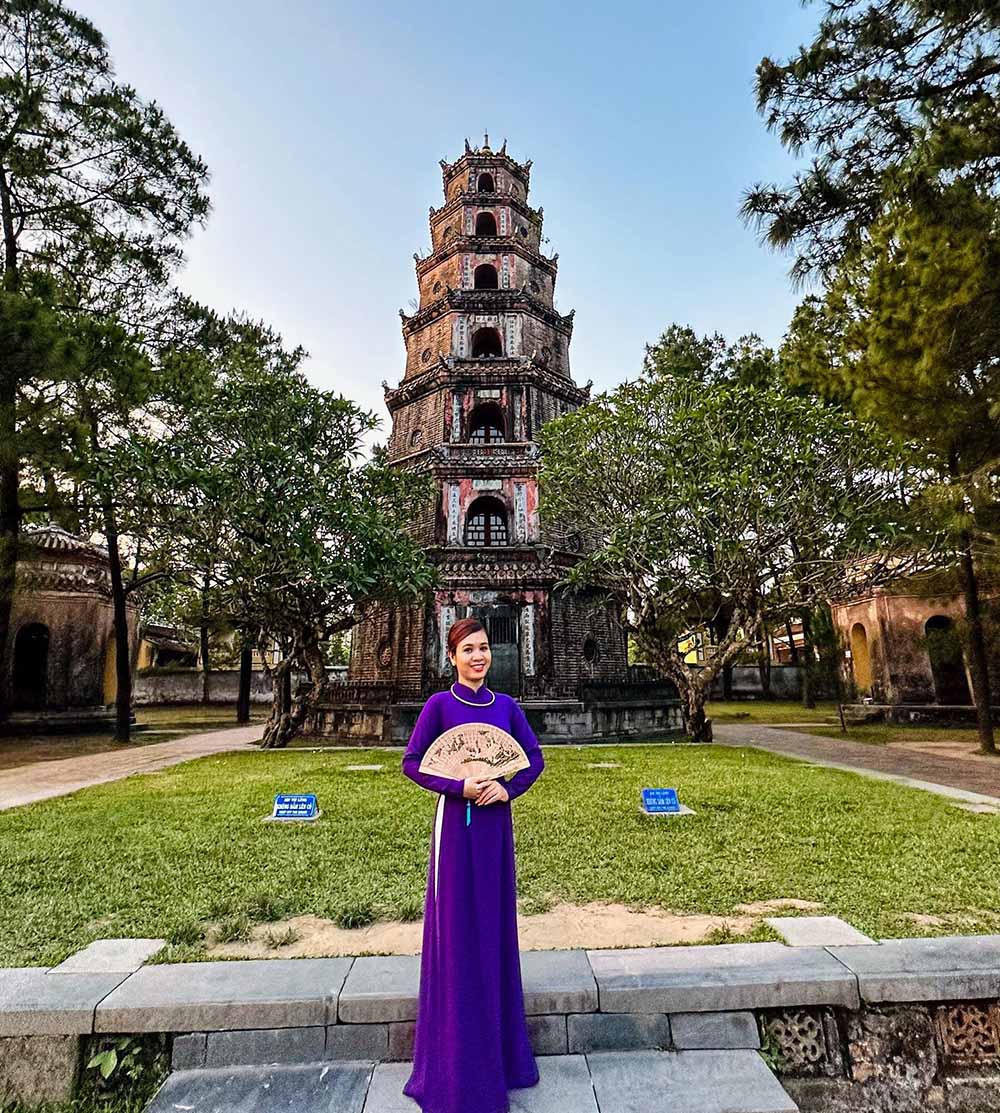
Phuoc Duyen Tower
Giant Turtle And Dai Hong Chung Bell
This bell was cast in 1710 under the Lord Nguyen Phuc Chu period. The real size of it is up to 2,5m high and 2,052kg. At that time, no one could reach that impressive size like the Dai Hong Chung bell.
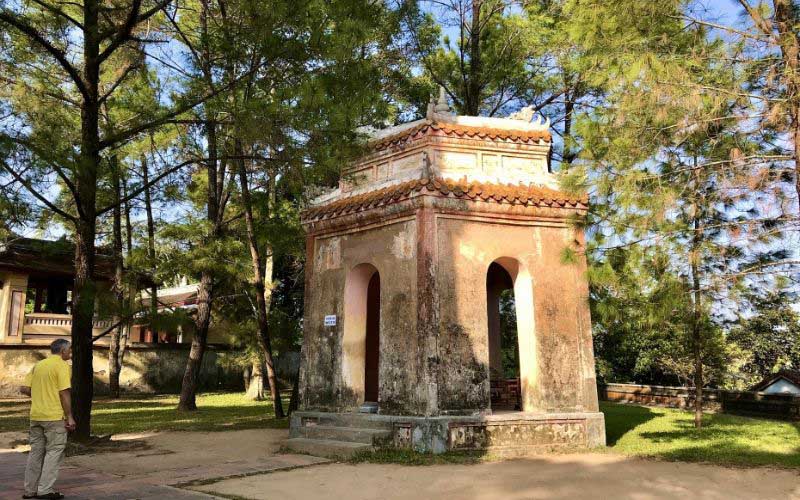
Dai Hong Chung Bell
Situated to the right of the tower is a substantial marble turtle, one of Vietnam's four sacred animals, and a symbol representing longevity and education. The stele positioned on the turtle's back serves as a commemoration of Lord Nguyen Phuc Chu's restoration efforts, dating back to the year 1715.
Austin Car
Strolling into the rear area, you'll encounter a serene and lovely garden adorned with numerous plants and exquisite bonsai trees. Noteworthy is the presence of an Austin blue car, a relic left by the late monk Thich Quang Duc before his self-immolation. This incident happened for the reason that he wanted to protest the Buddha-suppressing policy of the Ngo Dinh Diem regime in 1963.
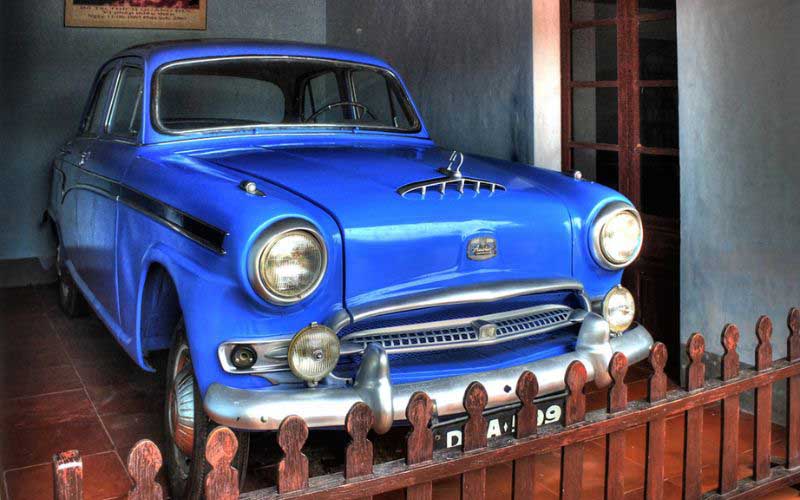
Austin Car
Want to explore further? Check out our post about things to do in Hue!
Thien Mu Pagoda is not the end of your adventure to uncover spiritual locations in Vietnam. There are also numerous sites for seekers of tranquility and cultural enthusiasts alike. If you are indecisive about which place to visit in Vietnam, consider a trip with a pre-planned itinerary. Visit the New Asia Tours website to find all the appealing Vietnam excursions you require.



